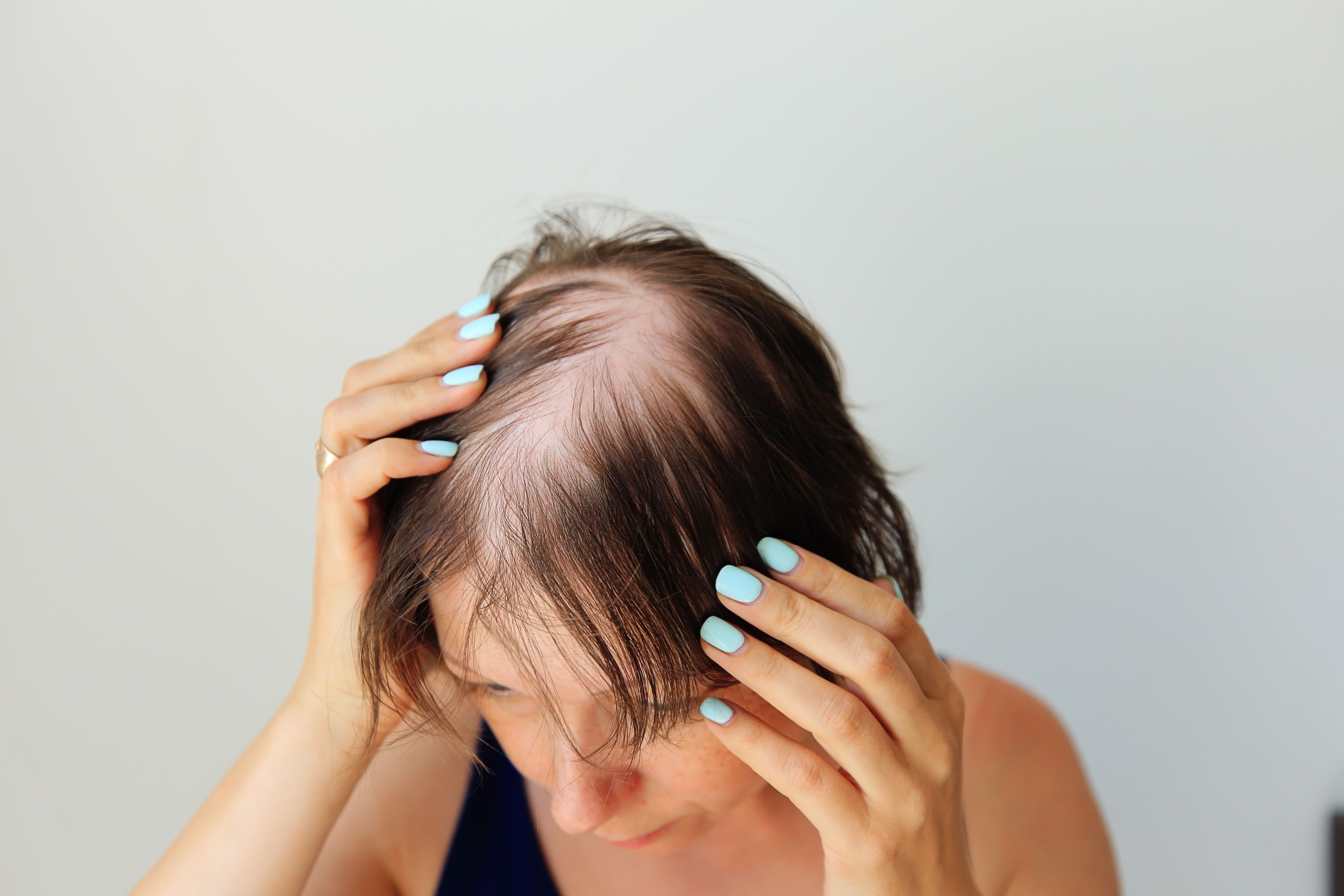- Case-Based Roundtable
- General Dermatology
- Eczema
- Chronic Hand Eczema
- Alopecia
- Aesthetics
- Vitiligo
- COVID-19
- Actinic Keratosis
- Precision Medicine and Biologics
- Rare Disease
- Wound Care
- Rosacea
- Psoriasis
- Psoriatic Arthritis
- Atopic Dermatitis
- Melasma
- NP and PA
- Skin Cancer
- Hidradenitis Suppurativa
- Drug Watch
- Pigmentary Disorders
- Acne
- Pediatric Dermatology
- Practice Management
- Prurigo Nodularis
- Buy-and-Bill
News
Article
Baricitinib Shows Superior Efficacy Versus Traditional Alopecia Treatments
Author(s):
Key Takeaways
- Baricitinib showed superior efficacy in treating severe alopecia areata compared to traditional therapies, with significant hair regrowth in 30% of patients after six months.
- The study involved 75 participants with a SALT score ≥50, divided into groups using baricitinib, topical immunomodulators, and traditional therapies.
The JAK inhibitor was significantly superior in all safety and efficacy endpoints, when compared to other AA treatment options.
Image Credit: © cattyphoto - stock.adobe.com

New data compared baricitinib to traditional therapies like diphencyprone and methotrexate in the treatment of severe alopecia areata (AA) over a 6-month period.1 In the study, all treatments were generally well-tolerated but baricitinib demonstrated the most efficacy and highest safety profile in a condition that can sometimes be difficult to treat. This study is the first of its kind to compare JAK inhibitors, like baricitinib, to traditional treatment options.
“For severe AA, where more than 50% of the scalp is affected, preferred options include topical immunomodulators like diphencyprone (DCP), contact sensitizers like anthralin, as well as systemic immunosuppressive drugs such as cyclosporine, methotrexate, or oral corticosteroids,” the authors wrote. “Despite the array of available medications, managing severe AA remains challenging, as traditional treatments often exhibit limited effectiveness and significant side effects.”
The retrospective chart review occurred at an outpatient metropolitan hospital from July 2021 to July 2023. Relevant information was collected from the hospital database as well as from the clinical examination of participants. Eligible adult and pediatric participants (n = 75) had newly presenting, relapsing, or treatment-resistant alopecia areata with a Severity of Alopecia Tool (SALT) score ≥ 50. SALT score is determined by adding the hair loss percentage in the various areas of the scalp. The majority of patients were female with an average age of 35 years and a mean SALT score of 87.49.
The participants were divided into 3 groups: those using topical immunomodulators (IMMs) (n = 51), those taking baricitinib (n = 19), and those receiving other treatments (n = 11). The IMMs group utilized medications diphencyprone and anthralin while the third group included traditional therapies like pulsed intramuscular corticosteroids, traditional immunosuppressants, topical clobetasol, topical vitamin D, and topical minoxidil. In total, 21 patients utilized more than 1 treatment option over the 2-year period.
The primary outcome measures were SALT ≤ 20 (20% scalp hair loss) and SALT ≤ 10 (10% scalp hair loss) after 6 months of treatment.T he secondary endpoints included the percentages of patients who achieved at least a 50% improvement and at least a 90% improvement from their baseline SALT scores.
All groups showed progressive improvement but after 6 months, the baricitinib group showed superior efficacy with about 30% of patients achieving SALT ≤ 20 and SALT ≤ 10, compared to 12% in the IMMs group and 9% in the traditional treatment group. In the baricitinib group, 26% of patients reached a SALT score of 90 after only 6 months of treatment. Only 12% in the IMMs group and 9% in the traditional IS group reached this mark.
Additionally, a larger proportion of patients receiving baricitinib reached SALT50 and SALT90 endpoints compared to the other groups. By the end of the period, nearly half of patients in the baricitinib group met the SALT50 endpoint compared to 17% and 27% in the topical IMMs and traditional therapy groups, respectively.
All treatment groups experienced mild-to-moderate adverse events that were generally expected by researchers. Most patients in the IMMs group experienced transient erythema and itching, especially those taking diphencyprone. In terms of more severe reactions, 5 patients reported blisters and papules while 3 reported headaches.
Almost half of patients in the baricitinib group experienced serum lipid elevations. About 25% reported short-lasting infections such as upper respiratory tract infections and urinary tract infections, which led to some pauses in treatment that lasted less than a week. A newly observed adverse effect of weight gain was seen in 3 patients, which is recommended to be investigated further in future studies.
For those using methotrexate, 25% saw elevations in liver transaminases, leukocytopenia, and gastrointestinal disturbances. None of the reported adverse events in any of the groups led to permanent drug withdrawal.
Janus kinase inhibitors are the first class of drugs registered for severe AA treatment since May 2022.2 Although a majority of US dermatologists prescribe baricitinib to their patients with AA, according to a recent analysis, JAK inhibitors are not considered the primary treatment method in many other countries.
Investigators noted several limitations in the study, including the small sample size and observational design, which can impact the statistical power and generalizability of the findings. Continued research is recommended to determine the long-term efficacy and safety of JAK inhibitors in treating alopecia areata.
References
1. Stefanis AJ, Dolezal T, Gkalpakiotis S, Arenberger P. Comparative Efficacy and Safety of Baricitinib Against Traditional Therapies in Severe Alopecia Areata: A Retrospective Cohort Study. J Cosmet Dermatol. Published online November 20, 2024. doi:10.1111/jocd.16666
2. Stefanis AJ. Janus Kinase Inhibitors in the Treatment of Alopecia Areata. Prague Med Rep. 2023;124(1):5-15. doi:10.14712/23362936.2023.1






